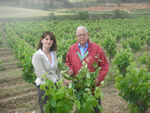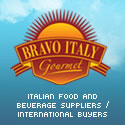 To celebrate the launch of the new *Wine Plesures Website 2.0, we have organised a live wine tasting direct from the Finca Mas Macià data 1290 of the Bohigas winery (DO Catalunya).
To celebrate the launch of the new *Wine Plesures Website 2.0, we have organised a live wine tasting direct from the Finca Mas Macià data 1290 of the Bohigas winery (DO Catalunya).
 Jordi Casanovas, owner and wine maker will lead the wine tasting in the old family house, starting at 20.00 (GMT+1) on Friday 28 August 2009.
Jordi Casanovas, owner and wine maker will lead the wine tasting in the old family house, starting at 20.00 (GMT+1) on Friday 28 August 2009.
The following wines will be included in the live tasting: Blanc de Tres (Garnacha, Xarel.lo & Sauvignon Blanc), Chardonnay Limousin, Cabernet Sauvignon & Syrah. Pairing suggestions will be made for each wine. We will also be chatting about the various wine tourism activities on offer such as winery visit & tasting, wine & food pairing, 4×4 to the top of Puig Aguilera crag, balloon trips, segways and the harvest parties.
Audiences will be both off – line (limited number of places) and on-line and anyone is welcome – wine lovers, bloggers, sommeliers, wine buyers/retailers, wineries…..
Bohigas is a smallish family run business boutique winery so don’t worry if you have not heard of them before. They have importers around the world so if you want to get hold of the bottles of wine and taste them during the live tasting please contact Bohigas prior to the event and ask for contact details of the distributor in your regi. They will be able to tell you the closest retail outlets to your home.
you have not heard of them before. They have importers around the world so if you want to get hold of the bottles of wine and taste them during the live tasting please contact Bohigas prior to the event and ask for contact details of the distributor in your regi. They will be able to tell you the closest retail outlets to your home.
To follow the event just visit the Wine Pleasures website and we will be live from our home page. You will be able to post comments, put questions to Jordi Casanovas and of course follow and see the whole event as it happens
 You can also follow the event through the Wine Pleasures twitter account @winepleasures. We will be using the #winepleasureslive hashtag to actively exchange questions and comments with the community. You’ll need to have a twitter account to participate in the twitter discussions.
You can also follow the event through the Wine Pleasures twitter account @winepleasures. We will be using the #winepleasureslive hashtag to actively exchange questions and comments with the community. You’ll need to have a twitter account to participate in the twitter discussions.
If you are able to physically join us we have a limited number of places available at the tasting table. Please contact us prior to the event to reserve your place or enrol through Facebook Events – the tasting room door is open and it’s free!
* New website available from 26 August 2009.




























 The Winery
The Winery 
 Speaker: Ramón Alverez – GSAR Marketing
Speaker: Ramón Alverez – GSAR Marketing
